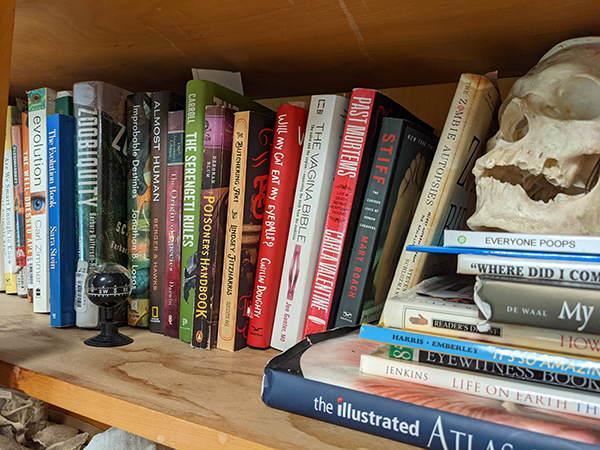My classroom has a collection of science themed books that are not textbooks that I periodically share with my students. For example, when discussing biochemistry at the beginning of the year, you will find a copy of the Poisoner’s Handbook on my desk, with several post-it notes attached. Students are curious about the book, mainly due to the title, and I eventually share with them excerpts from the manual that align with the daily lesson.

For example, there is a chapter on how methyl alcohol was used during prohibition and why a simple change in the molecular structure of alcohol can have devastating effects on the body. I will often have students ask if they can borrow the book, their interest piqued by the samples I shared with them.
I keep a copy of Darwin’s Origin of Species on my desk during the evolution unit, though this one isn’t as easy to read as some of the modern nonfiction selections I have collected over the years. Next to this classic, sits a copy of “Darwin and His Daughter” which is a much more personal account about the man behind the theory of evolution. “The Well-Dressed Ape” has amazing stories that can be shared regarding human evolution.
A chapter of Zoobiquity can be copied for students to read and discuss during the genetics unit which examines cancer and an ongoing study of golden retrievers. Excerpts can also be shared from the chapter on sexually transmitted disease if you want to gross your students out.
Non-fiction science has really changed since I was in college, with stories that grab your attention and your imagination and take students away from what they consider boring textbook reading. I love getting my students interested in reading something besides a textbook.

